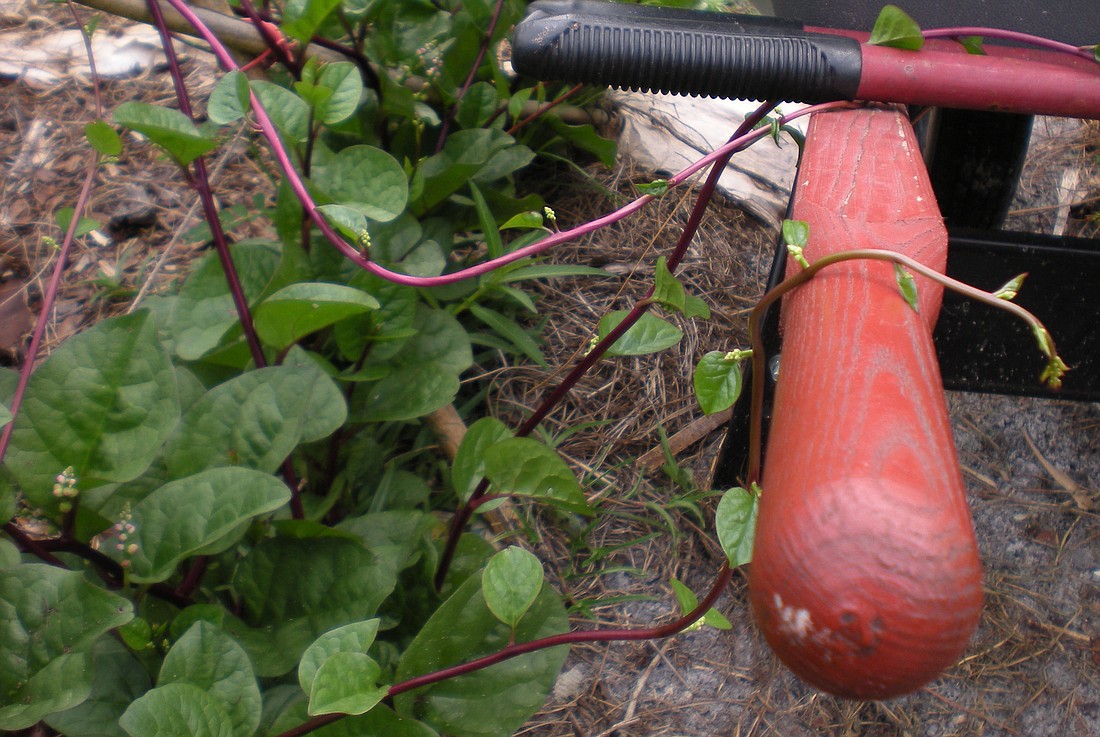- April 24, 2024
-
-
Loading

Loading

Eating the procured leaves of vegetable plants is the most productive form of edible gardening practiced. To take advantage of this simple largess, we need to cast our opportunities a bit wider than the bulk produce shoveled at us from a California plantation that has grown the same crops for generations (just ask Popeye the Sailor Man). The classic leafy green plant we call spinach (Spinacia oleracea) grows best in the cooler realms of temperate climates, definitely not during our hot summer conditions here in Central Florida. Numerous tropical plants of similar culture that will grow well for us have the moniker “spinach” tacked onto their name. Let’s try a few!
Malabar spinach (Basella alba) is a vine producing thick, succulent leaves and short seed stems. The seeds are easy to start and transplant well into a garden bed or larger container. Provide a trellis and stand back; I’ve had vines engulf a wheelbarrow parked nearby. The green leaf variety produces larger leaves, but the red type is beautiful mixed with various shades of green in a salad. Vine tips and immature flower/seed stems are also edible. The incredibly mucilaginous texture can be used to thicken soups and other recipe slights of hand. Malabar has plenty of vitamins, but its claim to fame is a high-protein-to-calorie content.
Surname spinach (Talinum fruticosum), native to Central and South America, grows as a low bush of light green leaves with pretty pink flowers. Another great source of vitamins and minerals, its weed-like productivity guarantees its reservation in my summer garden. The leaves are not as thick and succulent as the Malabar, but the stems and flowers are as edible. Garden grazing is highly recommended, with fresh salad or slight wilting also frequent menu uses.
Okinawa spinach (Gynura crepioides) is especially decorative, producing a rich purple underside leaf on low-growing bushy plants. Its leaves and stems can be used raw in salads, but I prefer this crop cooked or steamed as a pot-herb. As a cold-sensitive perennial, it will survive our winters with protection, but is best saved by propagating cuttings in autumn.
Vegetable amaranth (Amaranthus tricolor), called Red Calaloo in the Caribbean, is a great source of all the nutrients we eat spinaches for in the first place. Started by seed, this pretty plant grows in the garden as a short bush until first frost. Harvest individual leaves and young stems to use in numerous recipe methods from salads to soups. Native varieties of amaranth grow locally as a weed, but must be harvested at an immature stage to be eatable.